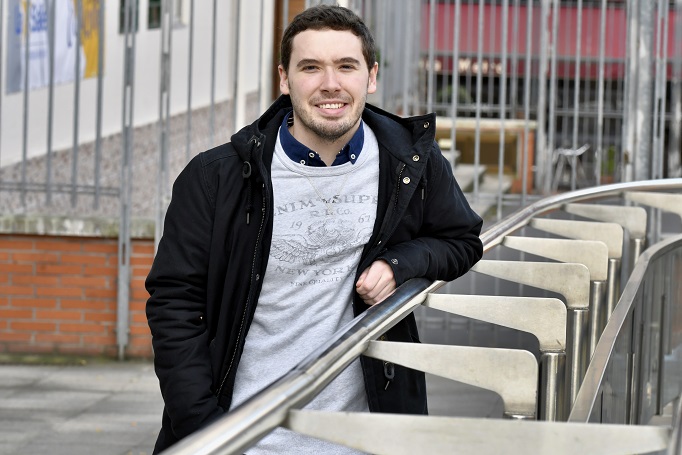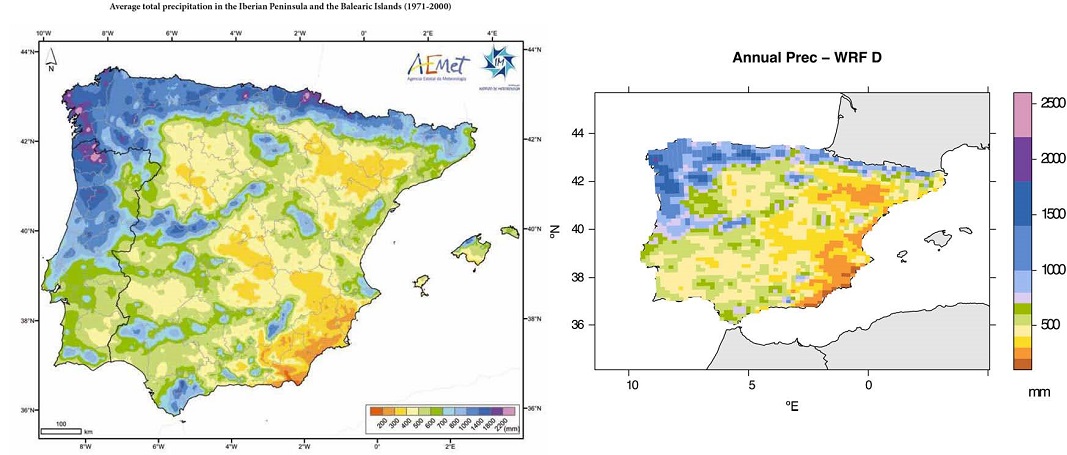The Iberian Peninsula is complex in terms of its topography and climate, and that is why it was chosen by the UPV/EHU’s Department of Applied Physics II to undertake a comparative study of two techniques for predicting regional rainfall. The effect of incorporating or assimilating real data into the meteorological simulations of water balance was also explored. During the tasks carried out in this study, a programming language package R aiRthermo was also developed.
-

In memoriam: Arturo Muga
-

Azukrea eta edulkoratzaileak. Zer jakin behar dut?
-

Athletic zuri ta gorria, zu zara nagusia, baina zertan? Gizonezko futbol profesionalaren gaitasun (im)mobilizatzaileari buruzko hausnarketa soziologikoa
-

Iñigo Argomaniz sustatzaileak eta Eli Arabaolaza ikertzaileak irabazi dute XXIII. Donostiako Orfeoia-UPV/EHU Saria
-

Unibertsitateko elikadura ingurune osasungarriago baten bila
The meteorological simulation of the Iberian Peninsula improves when models and observations are combined
A study by the UPV/EHU-University of the Basque Country compares different simulation systems and determines the best one for a region as complex as the Iberian Peninsula
- Research
First publication date: 02/01/2019

From a meteorological perspective, the Iberian Peninsula is a very interesting area of study, because a complex topography, various climate regions and different types of rainfall converge within the same environment. “Until now no direct comparison has been made between the two meteorological models that we have used for such a complex region, nor has the water balance of this region been simulated by including the assimilation of actual data into the WRF meteorological model,” explained Santos José González-Rojí, researcher in the Department of Applied Physics II at the UPV/EHU’s Faculty of Science and Technology.
The simulations by means of meteorological models are based on the parameterization of different physics variables that govern the atmosphere, and are resolved for each area in which the space that one is intending to simulate is divided. What downscaling models do, as Dr González pointed out, “is to take data from models of the major meteorological centres, such as the European or American ones, which are large-scale ones, and adapt them to smaller, more regional scales”.
On the other hand, data assimilation involves making corrections to the status of the meteorological model using for this purpose actual data that have been measured in the area of study. “Data assimilation is more expensive in computing terms, but our aim was to compare whether the results provided by the simulations that take them into account are better than conventional ones. There is a widespread perception that it does not provide good results for closing the water balance,” specified the researcher.
Data assimilation yes
As González has been able to show in the research, “data assimilation, when correctly set up, gives better results than conventional simulation, the most used one”. What they did in the study was to create two simulations using the same meteorological model, and the only difference between them was that data assimilation was added to one and a comparison made to see which one better simulated the water balance of the Iberian Peninsula, which was divided into areas of 15 x 15 km. “In the results, the model with data assimilation was seen to reflect the different rainfall patterns on the Peninsula very well, where the north has rainfall throughout the year and is associated with the fronts of the Atlantic cyclones, and the south is more seasonable, depends on isolated systems, and it more intense but does not last so long,” he specified.
In the other part of this study, Dr González compared the rainfall simulated by the two types of downscaling models; one is a dynamic one that basically is what has been described so far, in other words, taking a meteorological model on a large scale and reducing it to the desired scale, and the other a statistical one, in which 21 points across the Peninsula were taken into consideration, and the rainfall in each one of them was calculated by means of a totally statistical model. “We compared the rainfall simulated by each of the models to see which yielded the more reliable results, and what we saw was that, depending on the index being analysed, we would obtain better results with one technique or with the other,” he said.
According to González, this study has enabled them "to understand better how the Iberian Peninsula functions in terms of water balance so that the physics that governs the atmosphere can be better understood”. And given that most of the data analyses generated with the models were done using the R programming language, they took advantage of this to build the aiRthermo package: “This package can be downloaded free of charge via the CRAN warehouse. It is very useful for meteorologists and anyone studying the thermodynamics of the atmosphere.” He concluded by saying, “We have already received messages from people thanking us for it and giving us ideas to go on developing it.”
Additional information
This research was part of the PhD thesis by Santos José González-Rojí (Sestao 1990), entitled Numerical and observational study of the water balance over the Iberian Peninsula. It was written up in the Department of Applied Physics II of the UPV/EHU’s Faculty of Science and Technology, and supervised by Jon Sáenz-Aguirre and Gabriel Ibarra-Berastegui, lecturers in the departments of Applied Physics II and Nuclear Engineering and Fluid Mechanics, respectively. While writing up the thesis González went on two stays at the University of Loughborough (United Kingdom), where his supervisor was Robert L. Wilby.
Image gallery
-

Santos José González-Rojí, researcher in the Department of Applied Physics II at the UPV/EHU’s Faculty of Science and Technology (Photo: UPV/EHU) -

Maps showing the annual rainfall on the Iberian Peninsula: on the left, the one measured by Aemet and, on the right, the one simulated in the research taking data assimilation into consideration (Santos José González Rojí-UPV/EHU)



